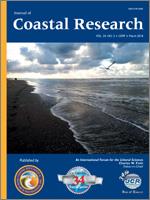Jury, M.R., 2018. Characteristics and meteorology of Atlantic swells reaching the Caribbean.
The characteristics of Atlantic swells reaching the Caribbean (19° N, 66° W) are described using wave hindcast and buoy datasets. The methods include calculation of histograms, scatterplots, temporal trends, ranking of extremes, meteorological case analysis, comparison of alternative datasets, and an assessment of similarity between cases. Northerly swells occur 29% of the time, with a mean height and period of 2 m and 8 seconds. A slight upward trend in wave period during 1998–2013 was related to an expanding anticyclonic Hadley circulation in the northwest Atlantic. An extreme case analysis illustrates how a storm near Bermuda on 16–20 March 2008 intensified as high pressure near Greenland blocked its progression. The cold air outbreak from the storm and 20 m/s northerly wind gusts induced heat fluxes up to 1000 W/m2 over the Gulf Stream outflow. Swells >6 m traveled southward, attenuating to 4–5 m and damaging coastal infrastructure in northern Puerto Rico. Similar weather patterns are found in the next five ranked cases and suggest that polar blocking is an essential feature of extreme Atlantic swells reaching the Caribbean.





